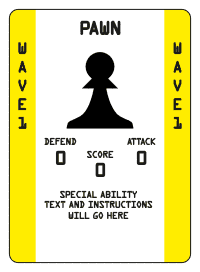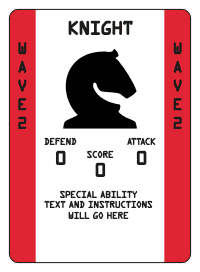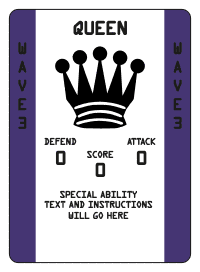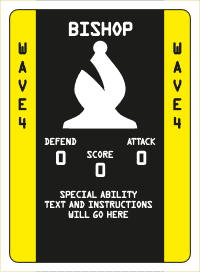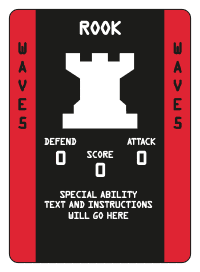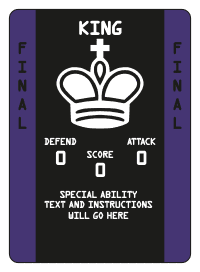How to make card decks have different odds of cards showing up — in a user-friendly way.
I came up with this idea for a different game where I wanted to change the odds of what kind of card a player gets mid-way though the game play.
Let’s say that getting an O card is good and an X card is bad and that there are 10 cards in total.
O O O O O O X X X X
When the first card is drawn from that deck, the odds are 4/10 (40%) that it will be an X.
What if I wanted to usually have more non-X cards show up before an X shows up?
I could make the 10 cards into 2 decks of 5 cards each — a blue deck and a red deck — with the blue deck having 4 O cards and 1 X card and the red deck having 2 O cards and 3 X cards.
O O O O X O O X X X
If the cards are played using first the blue deck and then the red deck, then:
For the first card drawn (from the blue deck) the odds are 1/5 (which is 20%) that it will be an X.
After the first 5 cards are used (the blue deck is finished) then cards will come from the red deck.
For the first card drawn (from the red deck) the odds are 3/5 (which is 60%) that it will be an X.
Thus making it so that later in the game it is more likely that a X will be drawn. And making it that there will definitely be one X drawn within the first 5 cards drawn.
—
In RamboPawn, to simulate the “waves” of oncoming enemies getting more difficult (as they would in a video game), there is a different deck for each wave. I made these different waves easily distinguishable by both color and text (for players with color vision difficulties) so that the cards for each wave can easily be selected and shuffled together.
Getting the most out of a pack of 54 cards.
In RamboPawn, all the cards have their faces showing when they are played, so that the player can think 3 moves ahead. I thought this was a good way to credit the game of Chess that inspired RamboPawn.
Because the cards are all played with their faces showing, I thought I could get the most usage out of each card by making both sides of the card playable.
Thus the cards break down into 3 decks — a yellow deck, a red deck, and a purple deck.
Another credit to Chess is that the first 3 waves are played to the White Squares and the second three waves are played to the Black Squares (after a deck is used it is flipped over and shuffled to go from White to Black and back).
This makes the final breakdown:
Wave 1: Yellow border cards with White Squares
Wave 2: Red border cards with White Squares (tougher than Wave 1)
Wave 3: Purple border cards with White Squares (the first Boss [Queen or King] — purple for royalty)
Wave 4: Yellow border cards with Black Squares (tougher than Wave 2)
Wave 5: Red border cards with Black Squares (tougher than Wave 4)
Wave 6: Purple border cards with Black Squares (the final Boss [Queen or King] — purple for royalty)
This is what the template cards look like (the actual game numbers and special notes are not filled in):
